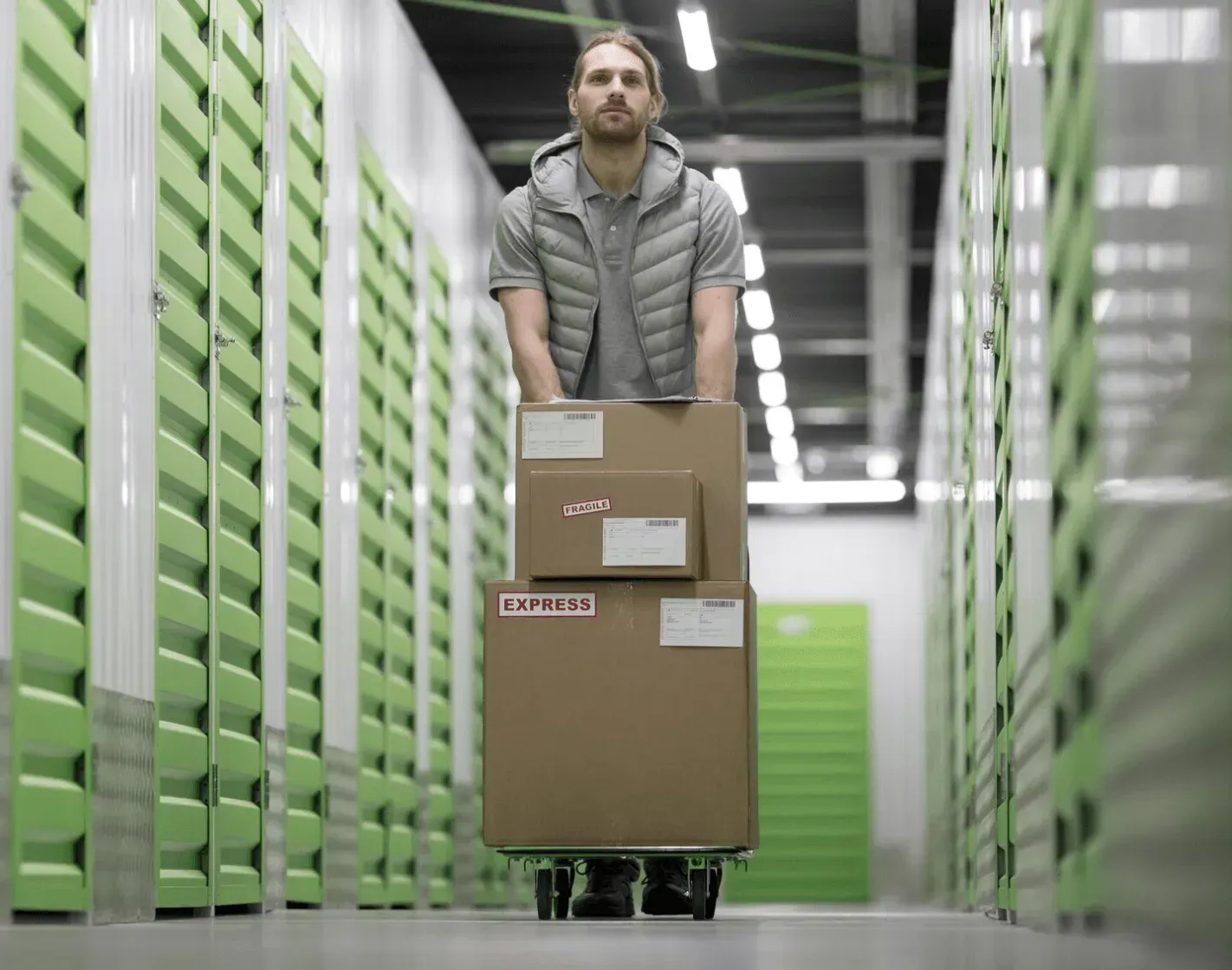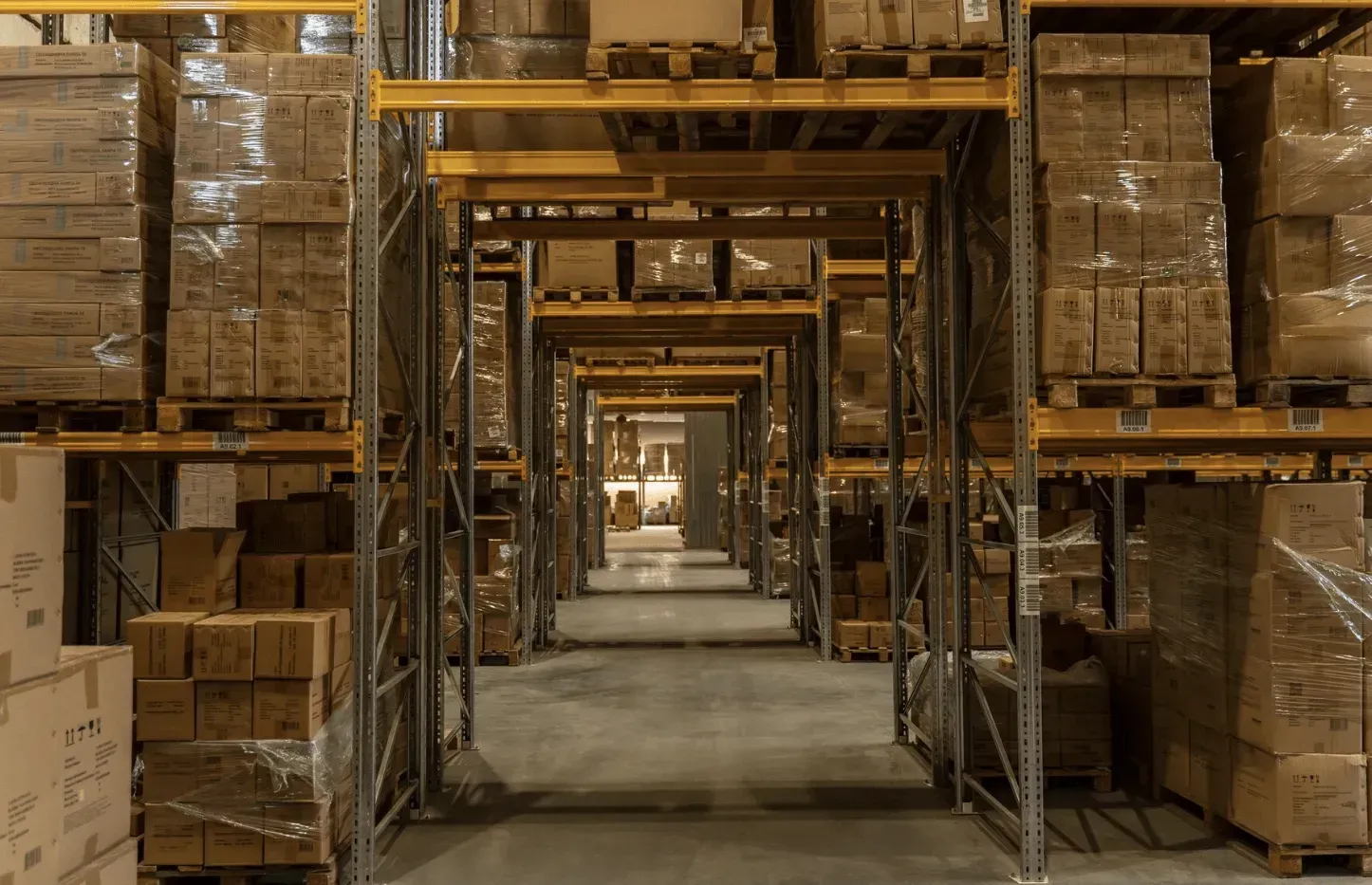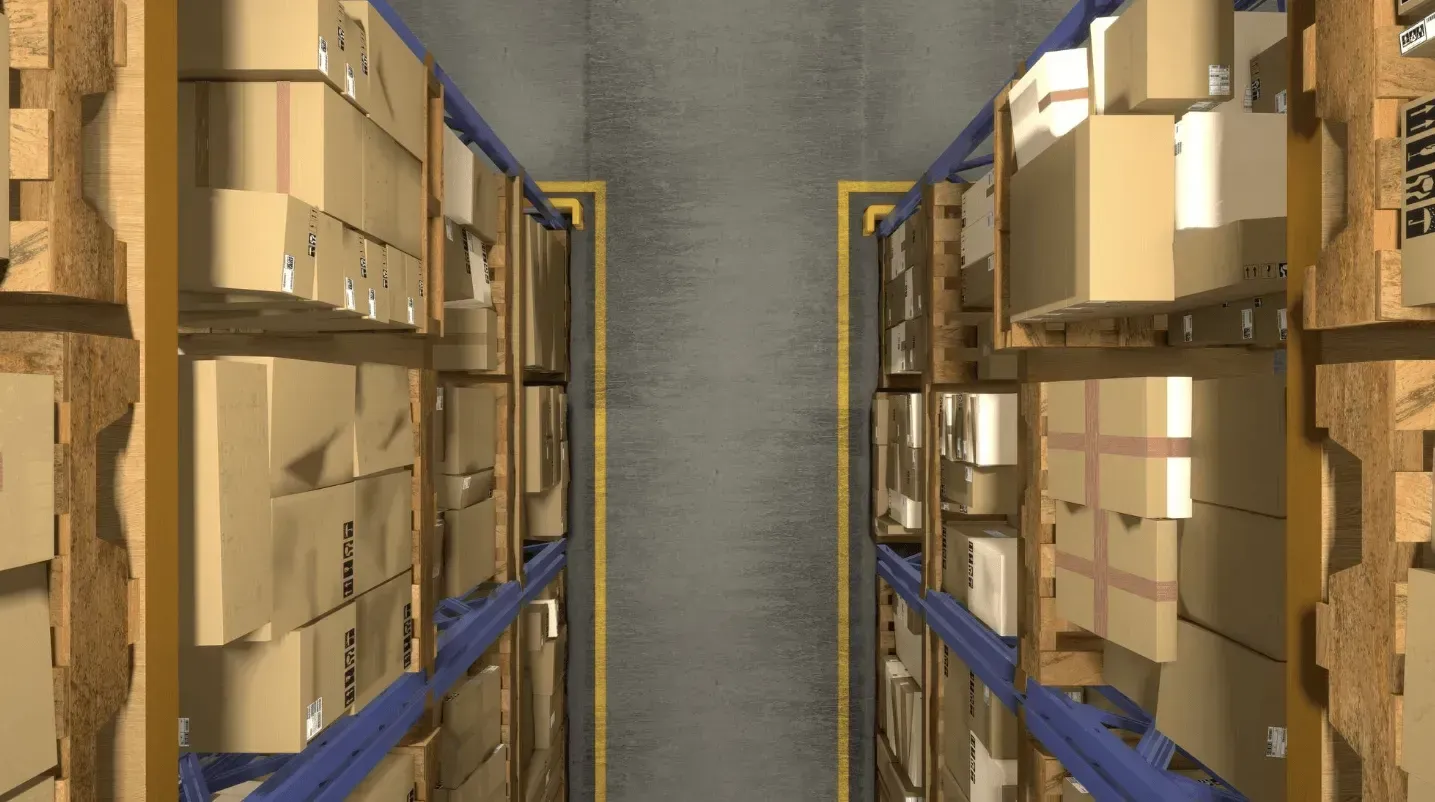Single Freight Warehousing in Colombia

Simple cargo storage in Colombia is essential for logistical efficiency. This practice allows for organized and accessible storage of goods, facilitating inventory management. With the growth of trade and demand, understanding its components and benefits becomes fundamental for companies. This article explores the key aspects of simple cargo storage and its impact on the industry.
Definition and Basic Concepts
Simple cargo storage is a fundamental aspect of modern logistics. Understanding its basics and components allows companies to optimize their operations and improve inventory management.
Simple Cargo Storage in Colombia
In the Colombian context, simple cargo storage is understood as a method of organizing and storing goods efficiently and without complications. This approach focuses on accessibility and ease of handling stored products. Companies that adopt this system typically manage a considerable volume of merchandise that requires a fast and effective flow.
Key Components of Storage
Simple cargo storage integrates several essential elements that contribute to effective operation. These components are vital to maximizing storage capacity and operational efficiency.
Metal Racks
Metal shelving systems are a cornerstone of simple cargo storage. These structures are durable and strong enough to support heavy loads. Their design allows for:
- Organized placement of goods
- Quick access to products
- Flexible configurations adaptable to various types of items
This type of racking can be customized based on the specific needs of businesses and is suitable for a wide range of industrial sectors.
Automated Systems
The implementation of automated systems is increasing in the Colombian logistics sector. These technological solutions optimize inventory handling and enhance space efficiency through:
- Robots that facilitate the movement and storage of goods
- Control systems that monitor and manage product flow in real time
These systems not only reduce operation time but also minimize human error, resulting in increased inventory management accuracy.
Importance in Logistics and the Market
Simple cargo storage plays a crucial role in the logistics field and the Colombian market. As trade and industry expand, optimizing storage processes becomes a key factor in companies' competitiveness.
Economic Benefits
Efficient storage has a direct impact on reducing operational costs. Companies are able to cut expenses through:
- Space optimization: A well-designed warehouse maximizes every square meter, which is critical in urban areas where rental costs are high
- Reduced handling time: With well-organized storage systems, operators spend less time locating and moving products, thus increasing productivity
- Improved inventory turnover: Efficient inventory management ensures high-demand products are dispatched quickly, avoiding obsolescence and financial losses
Impacted Industries and Sectors
The impact of simple cargo storage spans multiple industries in Colombia. Sectors such as retail, manufacturing, and third-party logistics (3PL) benefit significantly from the implementation of efficient storage systems:
- Retail: Retail chains need fast product access to meet customer demand. A well-designed storage system helps maintain a constant flow of merchandise
- Manufacturing: In this sector, storage affects both raw materials and finished goods. Efficient storage supports on-time deliveries and increases customer satisfaction
- Third-party logistics: 3PL companies handle high product volumes. Adequate systems enable them to serve multiple clients promptly and in an organized manner
Storage Solutions
Storage solutions are essential for optimizing inventory management and improving operational efficiency in warehouses. These range from manual systems to advanced technologies that enable more agile merchandise handling.
Selective and Dynamic Racking
Racks are a crucial part of the storage system, and there are different types adapted to various logistical needs. Selective racks are ideal for quick identification and direct access to products. They offer high flexibility and are easy to assemble and reorganize as needed.
On the other hand, dynamic racks provide greater efficiency in inventory rotation. These racks use roller systems or sloped shelves that allow goods to move smoothly. As a result, loading and unloading operations are faster, boosting overall productivity.
FIFO and LIFO: Use and Advantages
Within dynamic racking systems, FIFO (First In, First Out) and LIFO (Last In, First Out) methods play a significant role.
- FIFO is particularly advantageous for perishable products or goods with expiration dates, as it ensures older items are sold first. This minimizes the risk of obsolescence and inventory waste.
- LIFO, in contrast, may be more suitable for products without expiration dates that can be stored for long periods. This method allows for more flexible handling and is ideal for large, occasional product arrivals.

Automated Systems
Automation in storage processes has gained significant ground in recent years, becoming one of the most innovative solutions in today's market. These systems enhance efficiency and reduce dependency on manual labor, which is especially valuable in large-scale operations.
Autonomous Mobile Robots
Autonomous mobile robots are among the most advanced technologies in warehouse automation. These robots are designed to carry out transportation and picking tasks, optimizing the movement of goods within the warehouse. Their ability to operate independently allows them to significantly reduce travel time and increase workforce productivity.
These robots can adapt to various work environments and are capable of integrating with inventory management systems to provide real-time data on product availability and location. In doing so, they contribute to the continuous improvement of logistics processes.
Box Shuttle Systems
Another key technology in automated storage is the box shuttle system, used for vertical storage of boxes and goods. These systems maximize vertical space utilization in warehouses and enable quick and precise movements. Shuttle systems are interconnected with warehouse management software, which allows for efficient inventory control.
Their implementation reduces manual handling time and improves workplace safety by minimizing the need for employees to perform heavy lifting and cargo transportation. This not only boosts operational efficiency but also enhances working conditions within the warehouse.
Challenges in Storage Operations
Simple cargo storage faces several challenges that can impact the efficiency of logistics operations. These issues must be addressed to ensure proper management and continuous improvement in the sector.
Space Limitations
In Colombia, space limitation is one of the main challenges for storage companies. Rapid urbanization and population growth have increased space demand, which in turn drives up its cost. Businesses must seek innovative solutions to maximize available space and reduce costs. Some of these solutions include:
- Implementing vertical racking systems to make use of building height
- Efficient inventory rotation to avoid accumulation of obsolete goods
- Optimizing warehouse layout to ensure smooth workflows and proper product arrangement
It is crucial for companies to evaluate their current space and adapt to the market’s evolving needs. Their ability to respond to these challenges may determine their competitiveness in the sector.
Investment and Maintenance Costs
Another major challenge is the cost associated with initial investment in infrastructure and technology. Some companies—especially small and medium-sized enterprises—often struggle to afford these expenses. Investments in shelving, automated systems, and advanced technology may involve substantial financial commitments. These costs may include:
- Acquisition and installation of storage equipment
- Expenses for system maintenance and updates
- Staff training for efficient use of new tools and equipment
Maintenance costs are equally important, as inefficient storage systems can lead to higher long-term expenses. Companies must consider not only the initial cost, but also projected future costs, ensuring that their investment delivers sustainable results.
Innovations and Emerging Technologies
Technological innovations in storage are transforming the logistics sector in Colombia. Solutions are being implemented not only to improve operational efficiency but also to promote sustainability in warehouse operations.

Warehouse Automation
Automation has become a fundamental pillar for optimizing warehouse management. This advancement includes the use of technologies such as robots and software that enable better inventory control.
Key Automation Technologies
- Warehouse Management Systems (WMS): These systems support the planning, execution, and control of warehouse operations. They facilitate inventory tracking and improve workflow.
- Autonomous Mobile Robots (AMRs): These robots transport goods within the warehouse, reducing the need for human intervention and minimizing travel time.
- Shuttle and Crane Systems: Also known as stacker cranes, these devices speed up the movement of loads on high racks and improve vertical storage efficiency.
Sustainability and Energy Efficiency
Environmental concerns have driven many companies to adopt more sustainable practices. Optimizing energy use in warehouse processes not only reduces costs but also contributes to environmental responsibility.
Green Storage Practices
- Use of Sustainable Materials: Shelving and storage systems made from recyclable and low-impact materials are being increasingly adopted.
- Efficient Lighting Systems: The use of LED lighting and natural light sensors helps reduce energy consumption in warehouses.
- Route Optimization: Automation technologies enable the creation of shorter and more efficient internal transport routes, contributing to reduced carbon emissions.
Digitization and Traceability
Digitization is transforming how inventories are managed and how goods are tracked. Through technologies like the Internet of Things (IoT) and barcode systems, companies gain real-time access to product data.
Smart Tracking Tools
- Barcodes and RFID: These technologies make it easier to track products at every stage of storage, improving inventory accuracy and reducing losses.
- Real-Time Reporting: Digitization allows companies to automatically generate reports on inventory turnover, supporting more informed decision-making.
- Systems Integration: Connecting different platforms—such as order management and container tracking software—provides a holistic view of the logistics process.
Frequently Asked Questions
This section addresses some of the most common questions about simple cargo storage in Colombia, providing key information to better understand this logistical process.
How Can Warehouse Space Be Optimized?
Optimizing warehouse space can be achieved through a variety of strategies. Some of the most effective include:
- Vertical Racking: Using shelving that takes advantage of the warehouse’s height, allowing for more product storage without increasing the occupied area.
- Efficient Layout: Designing the warehouse layout to facilitate workflow, ensuring that loading, unloading, and storage areas are well distributed.
- Use of Dynamic Shelving: Implementing racks that allow quick and easy access to high-demand products, optimizing both space and labor time.
- Inventory Rotation: Applying inventory rotation principles like FIFO (First In, First Out) to ensure proper product flow and avoid stagnation.
What Types of Racks Are Most Efficient?
The most efficient type of rack depends on the specific needs of each warehouse. The most effective options include:
- Metal Shelving: Strong and versatile, ideal for heavy loads and a wide range of products.
- Selective Racking: Allows quick access to each product, facilitating inventory management and reorganization.
- Dynamic Racking: Available in FIFO and LIFO configurations, perfect for improving inventory rotation efficiency.
What Are the Costs Associated with Storage?
Storage costs can vary depending on multiple factors, such as:
- Infrastructure Costs: Include leasing or purchasing space, as well as investments in shelving and storage systems.
- Maintenance Costs: Related to the upkeep of the warehouse and storage equipment, which are vital to maintaining operational efficiency.
- Labor Costs: Investments in staff to operate and maintain the storage system, including training to optimize logistical processes.
- Inventory Costs: Expenses related to immobilized capital in stored goods, which are important for the company’s financial management.






